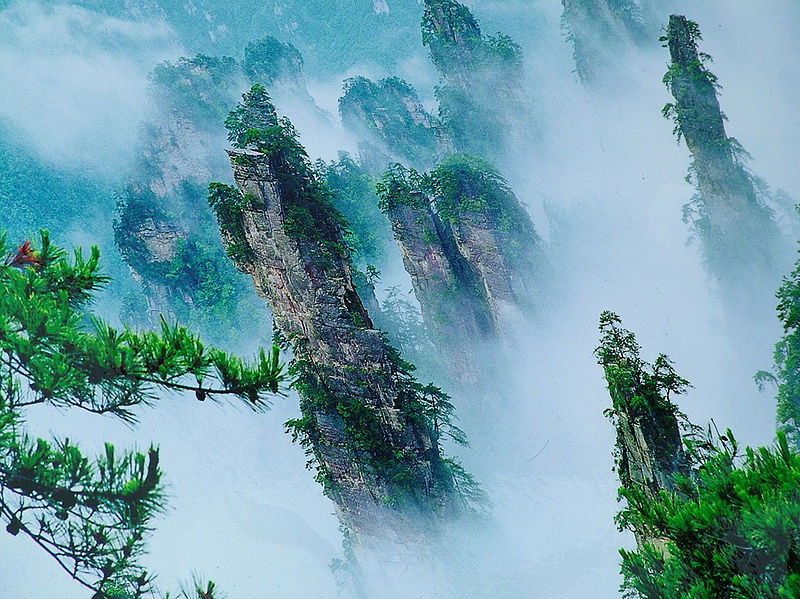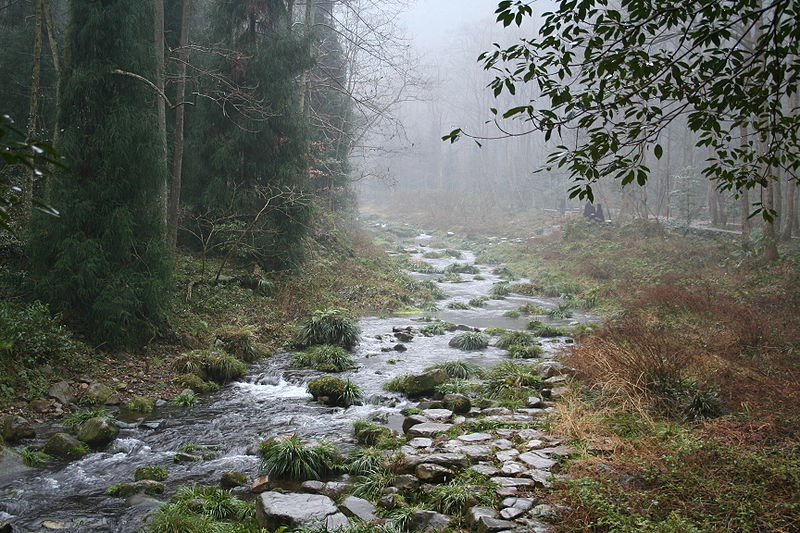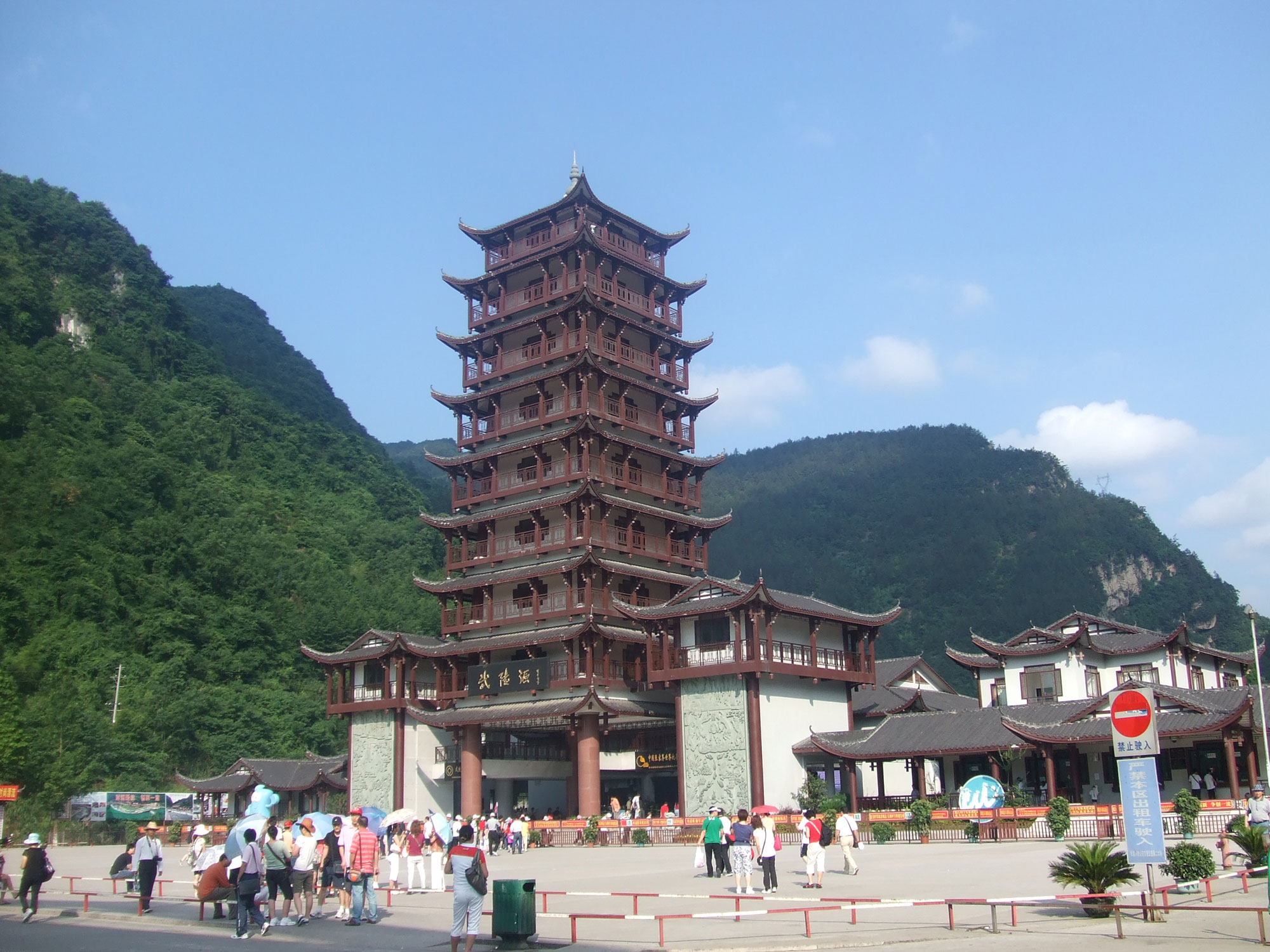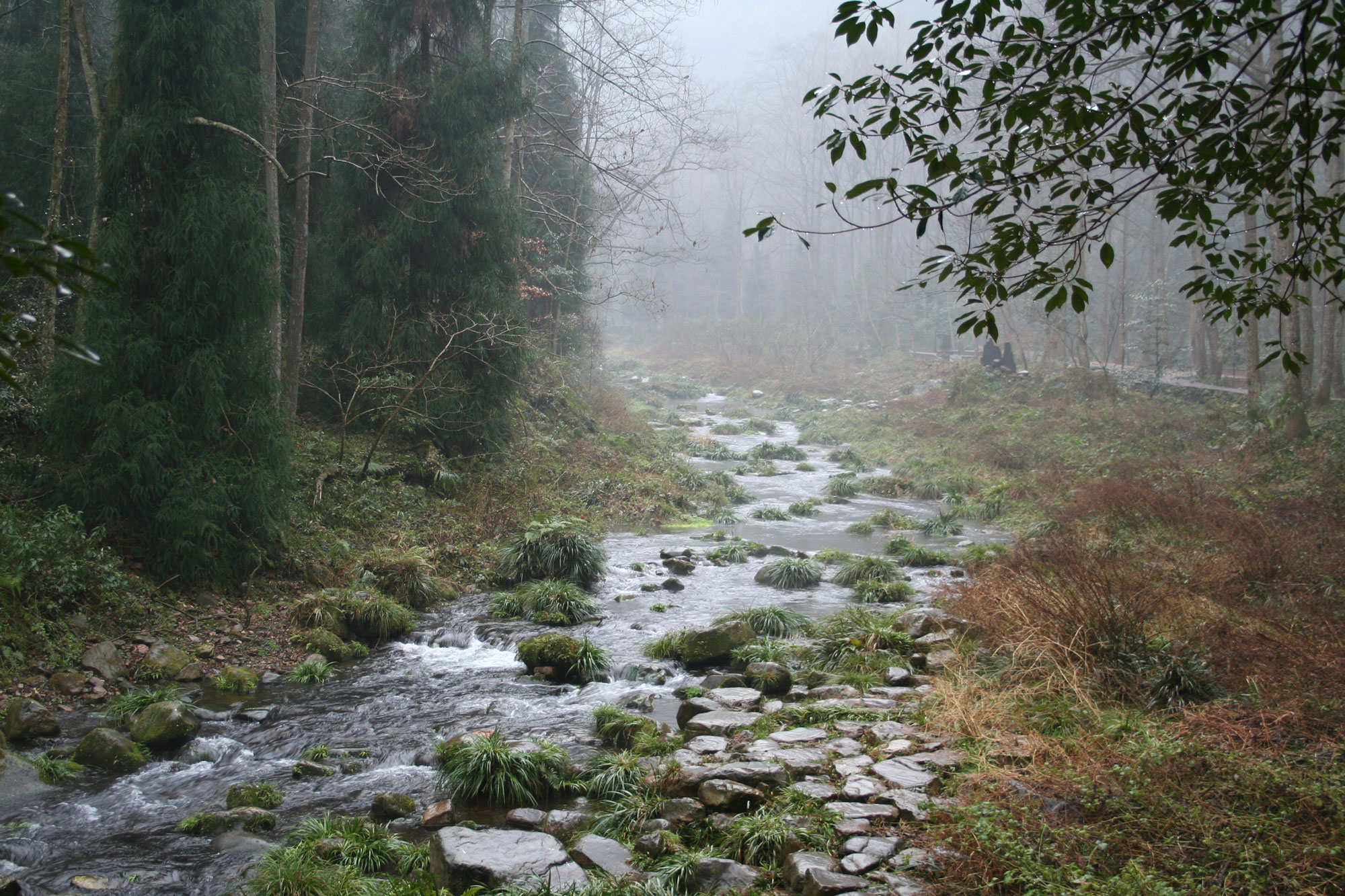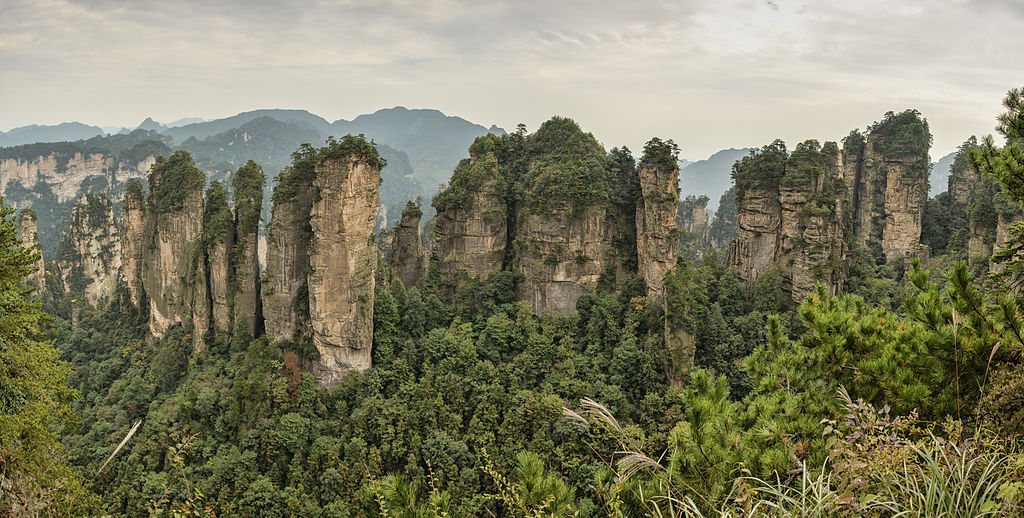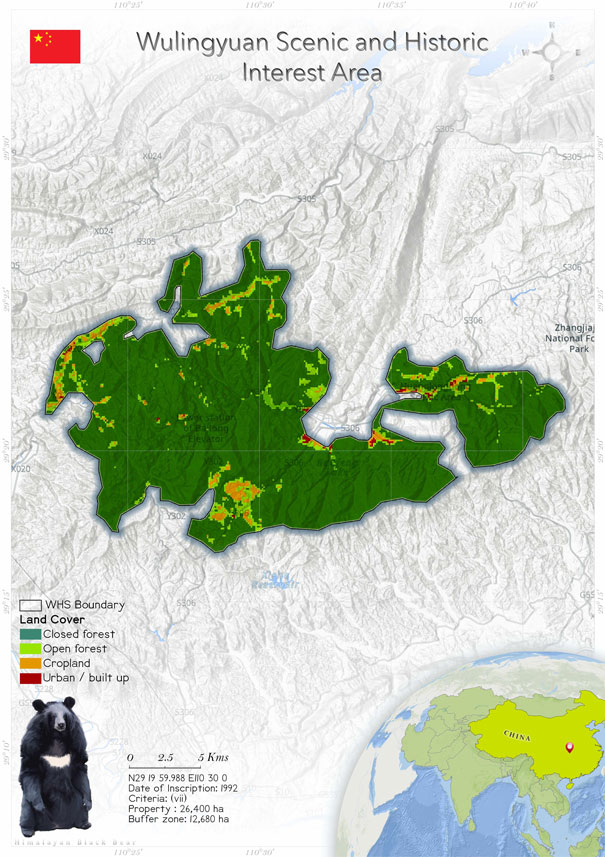
Wulingyuan Scenic and Historic Interest Area (640)
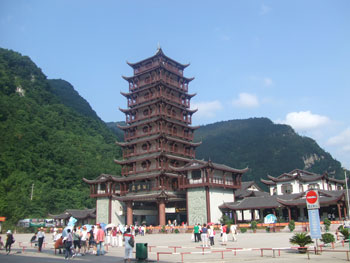 Wulingyuan Scenic and Historic Interest Area was inscribed as a World Heritage Site in 1992. Wulingyuan is a landscape full of sky-high quartz sandstone pillars, stalagmite-and-stalactite caves, luxurious vegetation and diverse wildlife. Serene waterfalls, streams and pools nestle within the ravines and gorges of the landscape. Zhangjiajie National Park is the first national park of China. It was designated a UNESCO Global Geopark in 2015. The pillars of this area are a result of complex geology, gravity and the unique topography of the heritage site. This unique topography also supports the magnificent vegetation and wildlife. The vegetation ranges from tropical and sub-tropical to temperate. The site is home to numerous endangered plant and animal species including the dawn redwood, ginkgo, clouded leopard, Asiatic wild dog, giant salamander, pangolin and Asiatic black bear. The site is a popular tourist spot, and an explosion of tourism after the inscription has become an issue of concern for the site administration and the State Party. The increased tourism has led to an increase in economic revenue but also in illegal tourism infrastructure and facilities. This overcrowding and the illegal facilities have put the site in danger of being delisted from the World Heritage Site list. However, the administration has taken some serious steps, such as demolition of the illegal tourist facilities in the site, removal and resettlement of local communities and not allowing construction of infrastructure that will compromise the Outstanding Universal Value of the site.
Wulingyuan Scenic and Historic Interest Area was inscribed as a World Heritage Site in 1992. Wulingyuan is a landscape full of sky-high quartz sandstone pillars, stalagmite-and-stalactite caves, luxurious vegetation and diverse wildlife. Serene waterfalls, streams and pools nestle within the ravines and gorges of the landscape. Zhangjiajie National Park is the first national park of China. It was designated a UNESCO Global Geopark in 2015. The pillars of this area are a result of complex geology, gravity and the unique topography of the heritage site. This unique topography also supports the magnificent vegetation and wildlife. The vegetation ranges from tropical and sub-tropical to temperate. The site is home to numerous endangered plant and animal species including the dawn redwood, ginkgo, clouded leopard, Asiatic wild dog, giant salamander, pangolin and Asiatic black bear. The site is a popular tourist spot, and an explosion of tourism after the inscription has become an issue of concern for the site administration and the State Party. The increased tourism has led to an increase in economic revenue but also in illegal tourism infrastructure and facilities. This overcrowding and the illegal facilities have put the site in danger of being delisted from the World Heritage Site list. However, the administration has taken some serious steps, such as demolition of the illegal tourist facilities in the site, removal and resettlement of local communities and not allowing construction of infrastructure that will compromise the Outstanding Universal Value of the site.
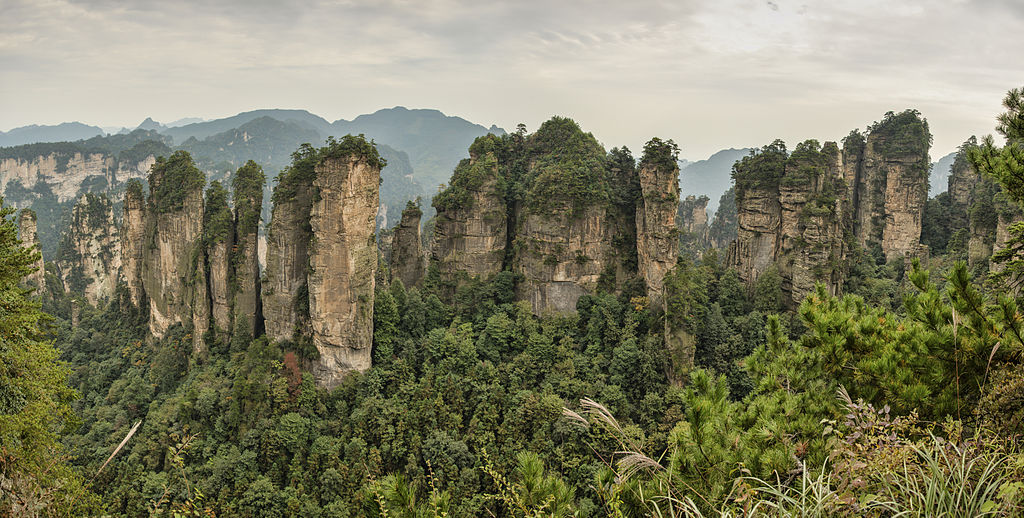 In the Wuling Mountains of north-western Hunan Province lies Wulingyuan Scenic and Historic Interest Area. It is located at 29° 20' N, 110° 30'' E. The scenic area is an island full of quartz sandstone pillars towering more than 200 m high, ravines, gorges, pools, streams, waterfalls and caves. AIt has two natural bridges. There are more than 3000 sandstone pillars and peaks. These are the most spectacular features of this scenic area. They are said to have formed during the Devonian (350– 400 mya) (Huadong 2013). Tuerwangyue Feng (Rabbit Watching the Moon Peak) is the highest peak in the area (Leng et al. 2011). Caves with calcite depositions, crystal clear lakes and streams, luxurious vegetation and a rich faunal diversity add to the Outstanding Universal Value of the scenic area. This heritage site is a congregation of three important areas: Zhangjiajie National Park, Souxiyu and Tianzishan nature reserves and Yangjiajie Scenic Area. Zhangjiajie National Park showcases a wide variety of vegetation, sandstone pillars, flat peaks and steep mountains. Yuanjiajie, Huangshizhai, Yaozizhai and Jinbian stream are the key areas of the national park. The unique landscape of Tianzishan Natural Reserve is a result of geological folding along with external influences such as wind, water and gravity. The reserve also has the largest number of sandstones pillars in the Wulingyuan Scenic and Historic Interest Area (Huadong 2013).
According to the nomination file of the property, Xianrenqias ("Bridge of the Immortal") and Tianqiashengkong ("Bridge across the Sky") are natural bridges within the site that rise towards the sky. Tianqiashengkong happens to be the highest natural bridge in the whole world, rising 357 m above the valley floor bed (Advisory Body Evaluation 1992).
Wulingyuan, since Quaternary Galciations has inhabited numerous ancient plants and animals; tropical, subtropical & temperate plants accounts for around 3000 species of flora, which also includes some 600 species of woody plants (IUCN World Heritage Outlook2020). A few globally threatened species are also found inside the historic site, including Metasequoia glyptostroboides (dawn redwood), Ginkgo biloba (ginkgo) and Davidia involucrata (dove tree). Evergreen broad-leaf forests are predominant below 700 m, the vegetation at 700–950 m comprises evergreen and deciduous broad-leaved trees, and above 950 m, bushes, herbs and deciduous broad-leaved trees are found (Advisory Body Evaluation 1992). Liu et al. (2016) described a new species belonging to the genus Chrysosplenium (C. zhangjiajieense) from Zhangjiajie National Forest Park. They also assessed the new species as Endangered (EN) as only 500 or fewer individuals of the species were found in three populations within the site (Liu et al. 2016). The unique topographical features of Wulingyuan make it a home of a diverse fauna. A total of 116 animal species belonging to 50 families are found in the scenic area. The fauna includes the clouded leopard (Neofelis nebulosa), Asiatic wild dog (Cuon alpinus), Asiatic black bear (Ursus thibetanus mupinensis), giant salamander (Andrias davidianus), pangolin (Manis pentadactyla) and otter (Lutra lutra chinensis) (Periodic Reporting 2003).
In the Wuling Mountains of north-western Hunan Province lies Wulingyuan Scenic and Historic Interest Area. It is located at 29° 20' N, 110° 30'' E. The scenic area is an island full of quartz sandstone pillars towering more than 200 m high, ravines, gorges, pools, streams, waterfalls and caves. AIt has two natural bridges. There are more than 3000 sandstone pillars and peaks. These are the most spectacular features of this scenic area. They are said to have formed during the Devonian (350– 400 mya) (Huadong 2013). Tuerwangyue Feng (Rabbit Watching the Moon Peak) is the highest peak in the area (Leng et al. 2011). Caves with calcite depositions, crystal clear lakes and streams, luxurious vegetation and a rich faunal diversity add to the Outstanding Universal Value of the scenic area. This heritage site is a congregation of three important areas: Zhangjiajie National Park, Souxiyu and Tianzishan nature reserves and Yangjiajie Scenic Area. Zhangjiajie National Park showcases a wide variety of vegetation, sandstone pillars, flat peaks and steep mountains. Yuanjiajie, Huangshizhai, Yaozizhai and Jinbian stream are the key areas of the national park. The unique landscape of Tianzishan Natural Reserve is a result of geological folding along with external influences such as wind, water and gravity. The reserve also has the largest number of sandstones pillars in the Wulingyuan Scenic and Historic Interest Area (Huadong 2013).
According to the nomination file of the property, Xianrenqias ("Bridge of the Immortal") and Tianqiashengkong ("Bridge across the Sky") are natural bridges within the site that rise towards the sky. Tianqiashengkong happens to be the highest natural bridge in the whole world, rising 357 m above the valley floor bed (Advisory Body Evaluation 1992).
Wulingyuan, since Quaternary Galciations has inhabited numerous ancient plants and animals; tropical, subtropical & temperate plants accounts for around 3000 species of flora, which also includes some 600 species of woody plants (IUCN World Heritage Outlook2020). A few globally threatened species are also found inside the historic site, including Metasequoia glyptostroboides (dawn redwood), Ginkgo biloba (ginkgo) and Davidia involucrata (dove tree). Evergreen broad-leaf forests are predominant below 700 m, the vegetation at 700–950 m comprises evergreen and deciduous broad-leaved trees, and above 950 m, bushes, herbs and deciduous broad-leaved trees are found (Advisory Body Evaluation 1992). Liu et al. (2016) described a new species belonging to the genus Chrysosplenium (C. zhangjiajieense) from Zhangjiajie National Forest Park. They also assessed the new species as Endangered (EN) as only 500 or fewer individuals of the species were found in three populations within the site (Liu et al. 2016). The unique topographical features of Wulingyuan make it a home of a diverse fauna. A total of 116 animal species belonging to 50 families are found in the scenic area. The fauna includes the clouded leopard (Neofelis nebulosa), Asiatic wild dog (Cuon alpinus), Asiatic black bear (Ursus thibetanus mupinensis), giant salamander (Andrias davidianus), pangolin (Manis pentadactyla) and otter (Lutra lutra chinensis) (Periodic Reporting 2003).
Criterion (vii)
The huge number of sandstone columns and peaks—more than 3,000—are spectacular. These, coupled with other land forms (natural bridges, ravines, waterfalls, streams, pools and caves) and dense broadleaf forest, present an aesthetically beautiful landscape enhanced by the mists and clouds which frequently shroud the site. There are more than 40 caves and two huge natural stone bridges, one of which rises 357 m above the valley floor. At time of evaluation it was also noted that with additional information there could also be justification for inscribing this property under criterion (x), as the site provides important habitat for a number of threatened plant and animal species such as dhole, Asiatic black bear and Chinese water deer.
Status
Wulingyuan was inscribed as a World Heritage Site in 1992 for its rocky-peak landscape and quartz sandstone pillars. To protect the Outstanding Universal Value of the property and draw up sustainable development plans, Ye et al. (2019) studied the vegetation dynamics and human activities within the heritage site. They concluded that (i) for about the past 18 years, the vegetation index and vegetation productivity have been high (ii) the area under vegetation in the buffer zone is increasing, and within the development region there is a slight decrease in the vegetation area. and They suggested that establishing national scenic areas and improving the woodland protection planning will play a significant role in the vegetation change. The inscription of Wulingyuan as s heritage site triggered a surge of tourists from all over the world, and now Wulingyuan is one of the major tourist destinations in China. Almost 68.8% of the residents are dependent on the ecotourism services, which shows that tourism is very beneficial for the revenue of the protected area (Li et al. 2011). The sudden increase in tourism has led to uncontrolled development of tourist facilities, which has led to degradation of the Outstanding Universal Value of the property (Han 2006). Traffic congestion, parking problems, declining living conditions and landscape damage are a few of the adverse effects observed within the property (Li et al. 2011). The considerable effect of mass tourism on the OUV was about to cost Wulingyuan its World Heritage Inscription, and the property would have been delisted. However, immediate actions taken by the central and provincial governments saved the site from being delisted. The administration demolished almost 340,000 m2 of tourist facilities and artificial scenic spots built inside the protected area. The local inhabitants were also removed, as a result of which there was a rapid loss of local tradition and culture. Hence, the government faced a strong backlash from the local community and the local government (Han 2006). Yellowstone Village Trail and Gold Whip Stream Trail are the two most used trails of Zhangjiajie National Park.. Treasure Box for Celestial Books is another site that has been most impacted, with a value of 87.50% of the Impact Vegetational Index having been measured, with SII being 2.27% (Deng et al. 2014). The vegetation of the area includes near-mature, mature and over-mature broad-leaf forests, and these are very important for preventing soil erosion. The Review of the State of Conservation (SOC) reports of five years (1998, 2015, 2018, 2019 & 2020) suggested that the State Party has taken preventive measures to protect the Outstanding Universal Value of the World Heritage Site. Environmental pollution prevention, management and control projects were carried out. Demolition of illegal buildings was also carried out in different phases. Substantial steps were taken to reduce the degradation of the visual appearance of the site caused by cable cars, elevators and an electric railway. Construction was strictly controlled, and almost no tourist facilities or other constructions have been built since 2015. The existing infrastructure is being upgraded only to improve the OUV and integrity of the site. The State Party has also managed to implement the "River Chief policy" recommended by the committee. The State Party successfully submitted the draft of the Sustainable Tourism and Development Strategy of the World Heritage Wulingyuan Scenic and Historic Interest Area.
